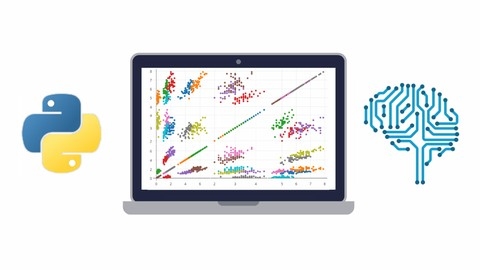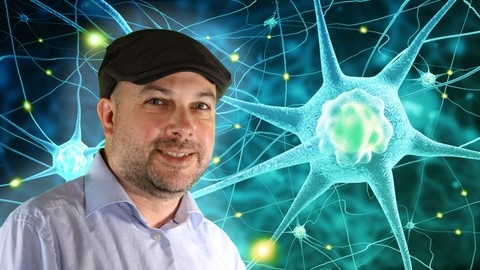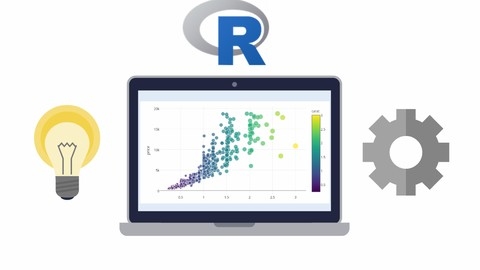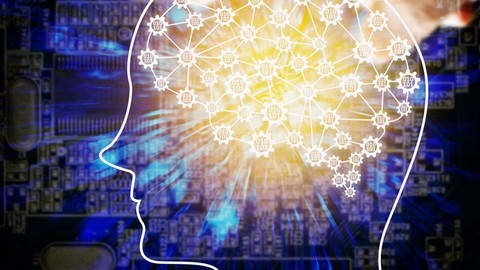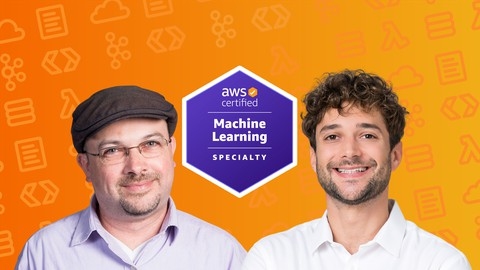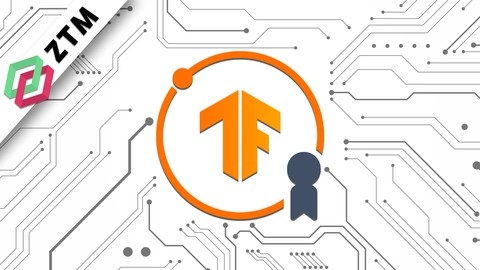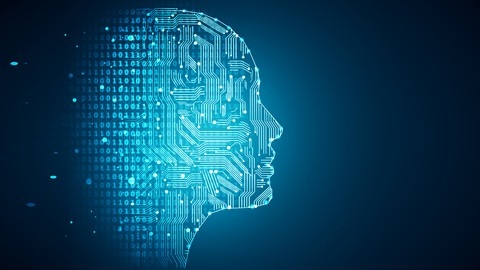Machine learning is a rapidly evolving field that empowers computers to learn from data without explicit programming.
It’s the driving force behind many technologies we use daily, like recommendation systems, fraud detection, and even self-driving cars.
By learning machine learning, you can unlock exciting career opportunities in data science, artificial intelligence, and various other industries seeking to leverage data-driven insights.
Finding the right machine learning course on Udemy can be overwhelming, given the sheer number of options available.
You’re searching for a course that provides a solid foundation in both theory and practice, offers hands-on projects, and is taught by experienced instructors who can guide you through the complexities of algorithms and model building.
Based on our in-depth analysis, we believe Machine Learning A-Z: AI, Python & R + ChatGPT Prize 2024 is the best machine learning course on Udemy overall.
It covers a wide range of topics, from basic concepts to advanced techniques like deep learning and natural language processing.
With hands-on exercises in both Python and R, you’ll gain practical experience in building and evaluating machine learning models.
While this is our top recommendation, Udemy offers a diverse selection of machine learning courses catering to various learning styles and preferences.
Whether you’re a beginner or an experienced programmer, seeking a specialization in deep learning or data science, we’ve got you covered.
Keep reading to explore our curated list of the best machine learning courses on Udemy, tailored to your specific needs and goals.
Machine Learning A-Z: AI, Python & R + ChatGPT Prize [2024]
This course covers everything from data preprocessing to advanced topics like reinforcement learning and natural language processing (NLP), making it suitable for both beginners and experienced learners.
You’ll gain hands-on experience by working with real-world datasets in Python and R, applying your knowledge through practical exercises and quizzes.
The curriculum dives deep into regression, classification, clustering, and even explores cutting-edge areas like deep learning, including artificial neural networks (ANNs) and convolutional neural networks (CNNs).
You’ll also learn about the powerful XGBoost algorithm, model selection, and boosting techniques to evaluate and improve model performance.
A special focus is placed on dimensionality reduction techniques such as principal component analysis (PCA), linear discriminant analysis (LDA), and kernel PCA, essential for managing high-dimensional data.
The course emphasizes practical application, ensuring you’re ready to tackle machine learning challenges head-on.
Completing the course unlocks a special prize and an opportunity for a live training session on boosting your career in machine learning.
Python for Data Science and Machine Learning Bootcamp
This course begins with a straightforward introduction to Python and setting up your environment with Anaconda and Jupyter Notebooks, ensuring you have the necessary tools at your disposal.
Quickly moving on, you’ll dive into Python programming through an engaging crash course.
This section equips you with the foundational skills needed for data analysis, preparing you for the more complex topics ahead.
The course then guides you through essential libraries like NumPy and Pandas, pivotal for data manipulation, followed by an in-depth exploration of data visualization tools including Matplotlib, Seaborn, and Plotly.
These segments are packed with exercises and projects, allowing you to apply what you’ve learned in practical scenarios.
When it comes to machine learning, the course covers a broad spectrum of algorithms from Linear Regression to Neural Networks, offering both theoretical knowledge and Python implementation practices.
You’ll get hands-on experience with TensorFlow and Keras in the Neural Nets and Deep Learning section, preparing you for the latest advancements in the field.
Additionally, the course introduces Big Data and Spark with Python, teaching you how to handle large datasets using Spark and AWS.
This inclusion ensures you’re well-versed in a crucial aspect of modern data science.
By the end of this course, you’ll have completed several capstone projects, each designed to challenge your understanding and application of the course material.
Machine Learning, Data Science and Generative AI with Python
Starting with setting up a Python environment tailored for scientific computing across Windows, Mac, or Linux, this course ensures you’re well-prepared.
It includes a Python crash course covering syntax, data structures, and functions, making it accessible if you’re new or returning to Python.
The curriculum progresses to foundational statistics and probability, applying these concepts through Python for a practical learning experience.
You’ll explore predictive models, including linear and polynomial regression, and delve into machine learning with supervised and unsupervised learning, Bayesian methods, and K-Means clustering.
A significant focus is on neural networks and deep learning, where you’ll learn to implement models using Tensorflow and Keras, and understand convolutional and recurrent neural networks.
The course also introduces you to the cutting-edge field of generative AI, including Variational Auto-Encoders (VAE’s) and Generative Adversarial Networks (GAN’s), for synthesizing realistic images.
Practical activities are integrated throughout, allowing you to apply concepts in real-world scenarios, from spam classifiers to movie recommendation systems.
The course culminates in a final project on mammogram image classification, challenging you to apply your learning.
Additionally, you’ll gain insights into deploying models, conducting A/B tests, and the ethical considerations in deep learning.
With the latest on Generative AI, including GPT and ChatGPT, this course equips you with the skills to tackle current and future challenges in machine learning and data science.
Complete A.I. & Machine Learning, Data Science Bootcamp
Starting with an introduction to the online classroom, this course fosters a supportive learning environment where you can easily ask questions and interact with peers and instructors.
You’ll quickly move into practical applications, exploring machine learning through engaging exercises like the Machine Learning Playground and building a YouTube Recommendation Engine.
The course breaks down complex topics into understandable segments, covering different types of machine learning, data evaluation, and the six-step machine learning framework.
Key sections include hands-on training in data manipulation with Pandas and NumPy, data visualization with Matplotlib, and model building with Scikit-learn.
You’ll tackle real-world projects on supervised learning, enhancing your problem-solving skills and applying theoretical knowledge in practical scenarios.
For those interested in the latest in A.I., the course also covers neural networks, deep learning, and TensorFlow 2, teaching you to manage unstructured data and leverage Google Colab and GPUs.
Beyond technical skills, you’ll learn to effectively present your work, ensuring you can communicate complex ideas clearly to various audiences.
Career advice, contributions to open source projects, and a thorough Python programming section are included to round out your education, making this bootcamp a solid foundation for anyone looking to enter the fields of machine learning and data science.
Machine Learning for Absolute Beginners - Level 1
You’ll start by understanding the rise of AI and its different types like classical programming, machine learning, and deep learning.
The course explains the distinction between applied and generalized AI, giving you context on why AI is becoming so prevalent now.
Next, you’ll dive into the basics of machine learning.
The “black box” metaphor helps demystify how ML models work.
You’ll learn about features, labels, training models, and the importance of generalization.
This lays the groundwork for the different categories of ML systems.
The course classifies ML into three main types: supervised, unsupervised, and reinforcement learning.
For supervised learning, you’ll explore classification (predicting categories) and regression (predicting numerical values).
Unsupervised techniques like clustering and dimension reduction are covered too.
Reinforcement learning, where an agent learns by trial-and-error in an environment, is also introduced.
You’ll understand how these decision-making agents work through examples.
Throughout the course, you’ll encounter quizzes that reinforce the key concepts.
And there’s even a bonus lecture at the end!
Data Science and Machine Learning Bootcamp with R
Starting with an introduction to data science and R programming, this course prepares you by covering setup procedures for Windows, Mac OS, or Linux, and familiarizes you with RStudio.
You’ll quickly move into practical programming, learning about variables, data types, and vector operations, along with essential data structures like matrices, data frames, and lists.
The course doesn’t stop at programming.
It extends into data manipulation, teaching you how to work with various data formats, including CSV and Excel, and even how to scrape web data.
This skill set is crucial for handling diverse data sources you’ll encounter in real-world scenarios.
Machine learning is at the core of this bootcamp, with detailed sections on linear and logistic regression, K-nearest neighbors (KNN), decision trees, random forests, support vector machines (SVM), and neural networks.
Each module includes a project, allowing you to apply theoretical knowledge to practical tasks, reinforcing your learning.
Data visualization skills are also covered, with tutorials on ggplot2 and Plotly, enabling you to create both static and interactive visualizations.
This is key for analyzing and presenting data effectively.
The capstone project culminates your learning experience, challenging you to apply all your acquired skills on a real-world problem.
Python for Machine Learning & Data Science Masterclass
Starting with an optional Python crash course, it caters to both beginners and those needing a quick refresher, covering essential programming concepts and environment setup with Anaconda and Jupyter.
The course quickly moves into core data science libraries, teaching you how to manipulate data using NumPy and Pandas, and visualize it with Matplotlib and Seaborn.
These skills are crucial for any aspiring data scientist, allowing you to clean, analyze, and present data effectively.
As you progress, the course dives deep into machine learning, starting with foundational algorithms like linear regression and logistic regression.
You’ll learn through hands-on coding, ensuring you understand both the theory and practical application of each model.
The curriculum also includes advanced topics such as K-nearest neighbors (KNN), support vector machines (SVM), decision trees, random forests, and boosting methods like AdaBoost and Gradient Boosting.
Unsupervised learning is also covered, with sections on K-means clustering, hierarchical clustering, and DBSCAN, alongside dimension reduction techniques like PCA.
These sections prepare you to tackle complex data sets and extract meaningful insights.
The course emphasizes real-world application, featuring exercises, projects, and a capstone project that challenges you to apply your learning to solve practical problems.
Finally, it concludes with a crucial skill in today’s data-driven world: model deployment.
You’ll learn how to make your machine learning models accessible as APIs, a vital step for any machine learning engineer.
Introduction to Machine Learning for Data Science
This course starts with a friendly introduction, offering tips to get the most out of your learning experience, and includes closed captioning for all students.
It breaks down complex concepts like artificial intelligence (AI), big data, and the differences between structured and unstructured data into understandable pieces.
You’ll explore the significant impact of machine learning on our lives, understanding its importance through real-world applications.
The course outlines the five-step machine learning process, guiding you from formulating the right questions to applying and presenting your model, ensuring you’re equipped to tackle any machine learning project.
As you progress, you’ll learn about essential tools for data science, including R, Python, SQL, Excel, and RapidMiner, with practical insights into each tool’s application.
The course also features a bonus section on using Python and Jupyter, where you’ll apply your skills to a real-world example: predicting Titanic survivors.
Artificial Intelligence & Machine Learning for Business
You’ll start by understanding what AI and ML are, their history, and the different types of ML like supervised, unsupervised, and reinforcement learning.
The course explains the capabilities and limitations of AI compared to humans, helping you determine when to apply these technologies.
It then dives into the potential risks of advanced AI systems like ANI (Artificial Narrow Intelligence), AGI (Artificial General Intelligence), and ASI (Artificial Super Intelligence).
You’ll learn about recent AI breakthroughs and how the world is changing due to these advancements.
The syllabus covers the building blocks of AI, common terminologies used in the field, and the tools and techniques employed for data capturing, processing, and model building.
From decision trees to neural networks, you’ll gain insights into various ML algorithms.
But that’s not just theory.
The course explores real-world applications of AI across industries like banking, e-commerce, healthcare, and telecom.
It also shows how AI can revolutionize different business functions such as HR, sales, operations, marketing, and supply chain management.
If you’re keen on implementing AI in your organization, the course guides you through developing an AI strategy, the level of change required, and timelines.
It discusses the key roles in an AI team and how to recruit top talent.
Moreover, the syllabus addresses common misconceptions about AI and ML, ensuring you separate fact from fiction.
It walks you through the entire AI creation process, from problem definition to model evaluation, using tools like OpenAI and guidelines from Google.
Finally, the course examines the promises of AI in driving innovation and efficiency, as well as the challenges and ethical considerations around developing safe and responsible AI systems.
AWS Certified Machine Learning Specialty 2024 - Hands On!
Starting with the basics, you’ll quickly get up to speed on how to maximize your learning experience on Udemy, including adjusting video settings for optimal viewing.
The course kicks off with Data Engineering, teaching you to create data repositories and implement data-ingestion and transformation solutions, with practical exercises on Amazon S3, Kinesis, and Glue.
You’ll then dive into Exploratory Data Analysis, where you’ll prepare and analyze data for modeling using Python, Jupyter notebooks, and tools like Amazon Athena.
This section covers essential techniques for handling various data types and visualizing information effectively.
The modeling sections introduce you to the fundamentals of machine learning and deep learning, including neural networks, activation functions, and convolutional and recurrent neural networks.
You’ll also explore modern NLP with BERT and GPT, gaining hands-on experience with Amazon SageMaker for building, tuning, and deploying models.
For those interested in high-level machine learning services, the course covers AWS services like Amazon Comprehend, Translate, Transcribe, Polly, and Rekognition, teaching you how to apply these for tasks such as natural language processing and computer vision.
The course also focuses on ML Implementation and Operations, guiding you through deploying machine learning solutions securely and efficiently on AWS.
Plus, an optional section on Generative AI introduces you to the latest in Transformers, GPT, and foundation models.
TensorFlow Developer Certificate Bootcamp (Deep Learning)
The course starts by introducing you to the fundamentals of deep learning, neural networks, and TensorFlow.
You’ll learn how to create and manipulate tensors, which are the building blocks of TensorFlow models.
This section covers essential concepts like tensor operations, matrix multiplication, and data types.
Next, you’ll dive into building neural network models for regression and classification problems using TensorFlow.
You’ll learn how to preprocess data, create model architectures, train models, and evaluate their performance using metrics like mean squared error and confusion matrices.
The course covers techniques like feature scaling, data augmentation, and non-linearity to improve model performance.
The course then moves on to computer vision and convolutional neural networks (CNNs).
You’ll learn how to build and train CNNs for image classification tasks, including techniques like transfer learning and fine-tuning pre-trained models.
You’ll also learn how to make predictions on custom images using your trained models.
Natural language processing (NLP) is another major topic covered in the course.
You’ll learn how to preprocess text data, convert it into numerical representations, and build models like recurrent neural networks (RNNs) and 1D CNNs for tasks like sentiment analysis and text classification.
The course also covers time series forecasting with TensorFlow, which is essential for predicting future values based on historical data.
You’ll learn how to prepare time series data, build models like LSTMs and N-BEATS, and evaluate their performance using metrics like MASE.
Throughout the course, you’ll work on several milestone projects that allow you to apply what you’ve learned to real-world problems.
These projects include building a food vision model, an NLP model for medical abstracts, and a Bitcoin price forecasting model.
As you progress through the course, you’ll also learn about advanced topics like transfer learning, feature engineering, and ensemble models.
The course also includes a section dedicated to preparing you for the TensorFlow Developer Certification exam.
The Complete Machine Learning Course with Python
This Machine Learning course begins with the fundamentals and guides you to an advanced level using Python.
You start by establishing your coding environment with Anaconda.
You then learn how to use Python libraries such as Scikit-learn and Seaborn to analyze and visualize data, preparing you to build predictive models.
You’ll explore various machine learning methods, including Regression, Classification, Unsupervised Learning, and Deep Learning techniques.
You will discover how to use Regression analysis types like Linear, Multiple, Polynomial, and Robust Regression.
You learn how to evaluate their performance and manage issues like non-linear relationships.
You’ll then dive into Classification models, exploring techniques like Logistic Regression, Support Vector Machines (SVMs), and Decision Trees.
You will work with real-world datasets like MNIST, learning how to classify handwritten digits.
The course then explores Unsupervised Learning techniques.
You learn how to reduce data dimensions with methods like Principal Component Analysis (PCA) and categorize data points based on similarities using methods like k-means clustering.
Finally, the course introduces the world of deep learning, where you will build Convolutional Neural Networks (CNNs) and explore tools and techniques like Data Augmentation and Transfer Learning.
By the course’s end, you will confidently tackle real-world projects using Python and machine learning techniques.
What Are The Best Udemy Courses For Learning About Deep Reinforcement Learning?
While many of the courses mentioned touch upon reinforcement learning concepts, none specifically focus on deep reinforcement learning in great depth.
For a more specialized deep reinforcement learning course, read our post on the best reinforcement learning courses on Udemy.
Are There Any Udemy Courses That Focus Specifically On Tensorflow Or Pytorch For Deep Learning?
Several of the Udemy courses mentioned utilize TensorFlow and touch upon PyTorch, but they don’t solely concentrate on either framework.
For example, the “TensorFlow Developer Certificate Bootcamp” uses TensorFlow extensively to prepare students for the certification exam.
Other courses like “Machine Learning, Data Science and Generative AI with Python” introduce TensorFlow and Keras for implementing neural networks.
However, for a deep dive into either TensorFlow or PyTorch specifically, read our post on the best deep learning courses on Udemy.
Also check our posts on:

![Machine Learning A-Z: AI, Python & R + ChatGPT Prize [2024]](/img/best-machine-learning-courses-udemy/950390_MachineLearningA-ZAIPythonRChatGPTPrize2024.jpg)
